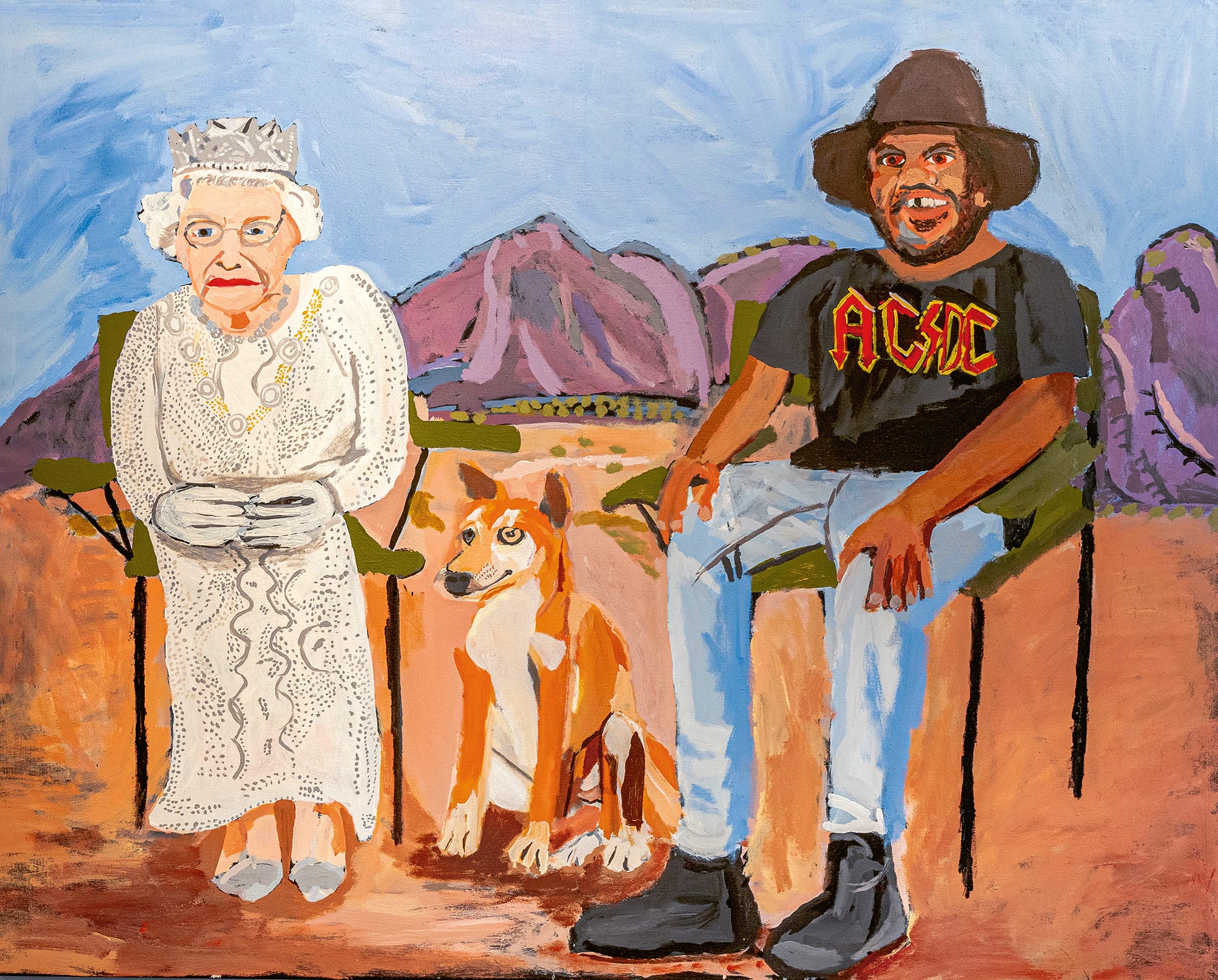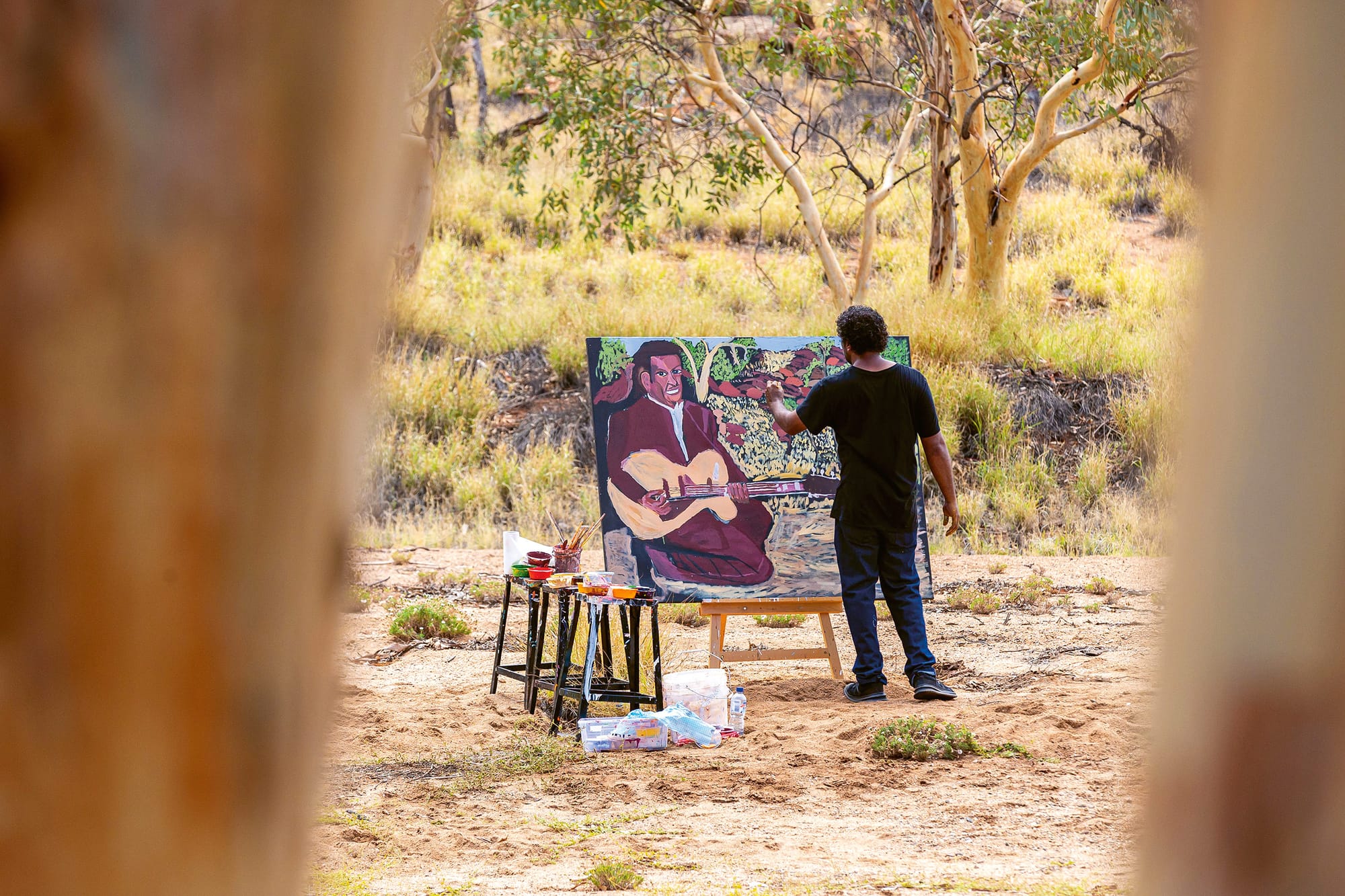
Picking up a paintbrush at Iwantja Arts changed everything for Vincent Namatjira, the great-grandson of Western Aranda watercolourist Albert Namatjira.
by Vincent Namatjira
Art is powerful. Art is a weapon. Art changed my life and I think art has the power to change the world, too.
This is what I said when I accepted the Ramsay Art Prize at the Art Gallery of South Australia in 2019. At the time this was the biggest moment of my career and I felt nervous getting up in front of everyone, but I meant those words—art is my weapon.
I’ve used the paintbrush and the canvas to lift myself out of hard times. I titled my 2020 Archibald Prize-winning painting of Adam Goodes Stand strong for who you are as a tribute to Goodesy’s battle against racism, but it’s also how I want to be seen: standing strong, proud of myself, proud of my family and proud of my people.
As a young kid growing up in the foster system I was disconnected from family, disconnected from Country and disconnected from culture. I was even disconnected from language—in one foster home me and my sister Rhonda were forbidden from speaking to one another in Western Aranda. My mother had passed away suddenly and I found myself on the other side of the country in Perth, about as far away as you can get from my family and home in Central Australia. The feeling of being away from my proper place was inescapable. I felt uneasy all the time. I felt powerless.

People often ask me, ‘Why do you paint the queen, or politicians in the desert, in the Central Australian landscape?’ Being out of place, being out of your comfort zone takes away some of your power—I know how this feels—so I paint these influential figures like royals and world leaders on Country—on Aboriginal land—as a way of putting them on the same level as me and everybody else, so we’re all equal.
The paintbrush—and a sense of humour—is a weapon that can bring the rich and powerful down to our level. I also use the paintbrush to lift others up, to celebrate Indigenous leaders and personal heroes—sportspeople, artists, musicians, Aboriginal soldiers, mentors and friends; I paint these people out of respect and admiration.
I want to see Aboriginal leaders past and present acknowledged and properly recognised in this country. My three daughters are all growing up now, and I want them—and other Aboriginal kids—to be able to see these strong examples of Indigenous leadership, to feel proud and empowered.
I first started painting at Iwantja Arts a bit over 10 years ago and I can honestly say that art has changed my life. I came to Indulkana not long after returning to Central Australia from Perth, and was welcomed to the art centre by Elders—like Kunmanara (Jimmy) Pompey—who supported and encouraged me to find my own path as an artist.

Painting has given me a voice and a purpose. That youngfella recently returned from Perth, angry and confused, is now a role model for his community, helping other young people find their own direction. Through sharing my artwork, I want people to get to know me a bit, to see what I’m interested in, what is important to me: Country, family, history, power, recognition.
Picking up the paintbrush has changed my life. I now feel a responsibility to keep going and to stay true to my words. Art is powerful. Art is my weapon. Art can change the world.”
This is an edited extract from Iwantja: An exuberant new movement in contemporary Indigenous art, told by the Iwantja artists (Thames & Hudson Australia, $79.99). It includes extracts from essays by Vincent Namatjira, Lisa Slade and Hannah Presley.